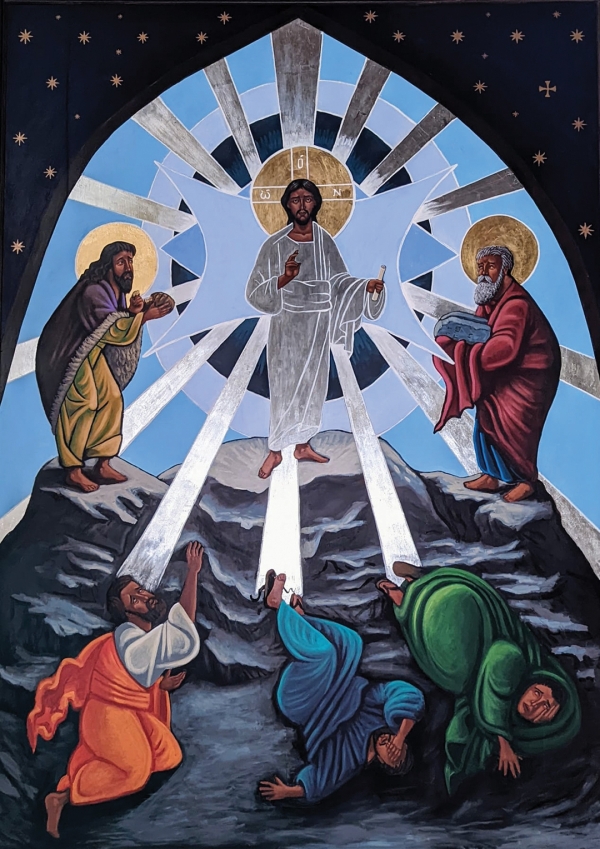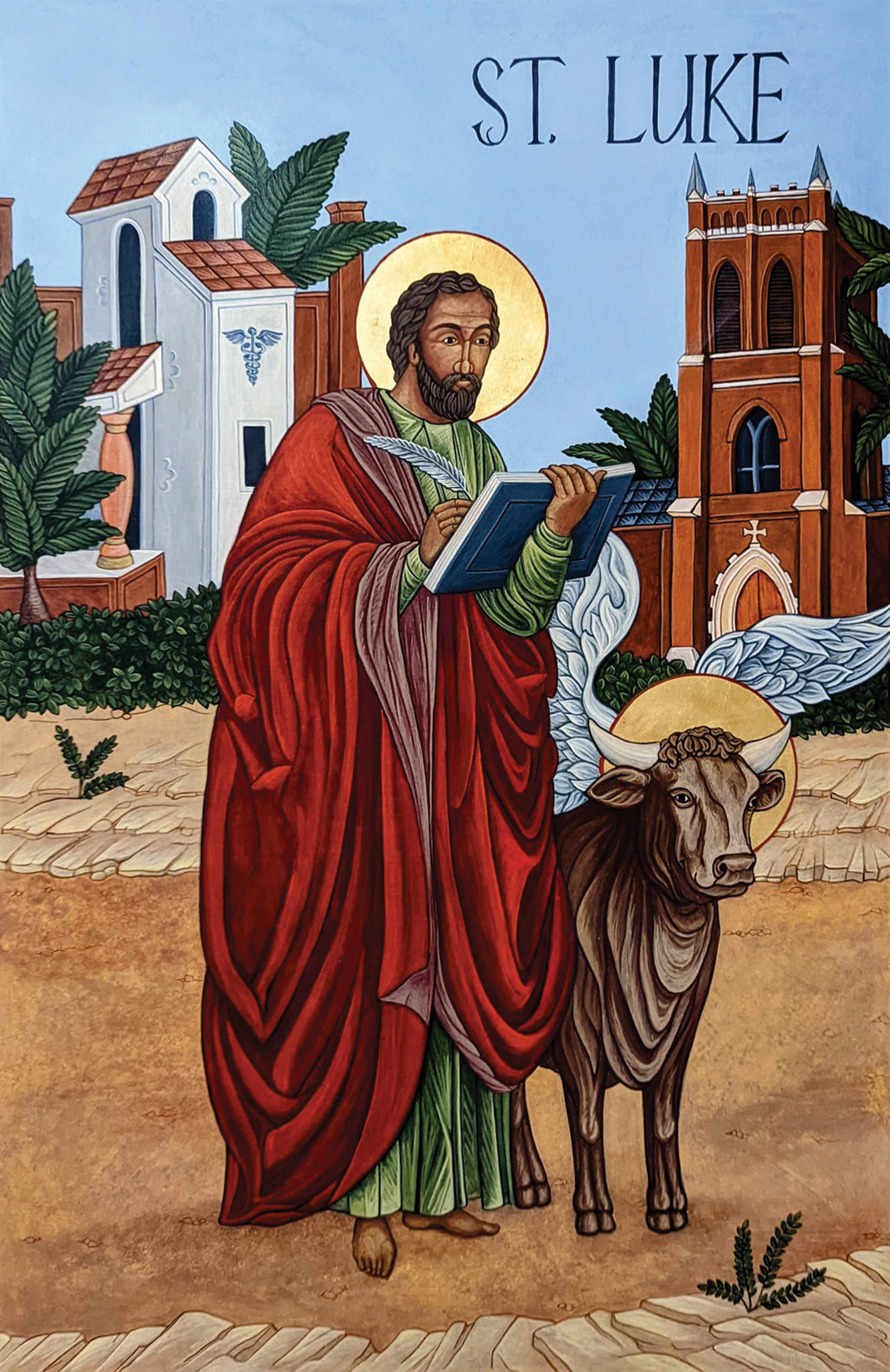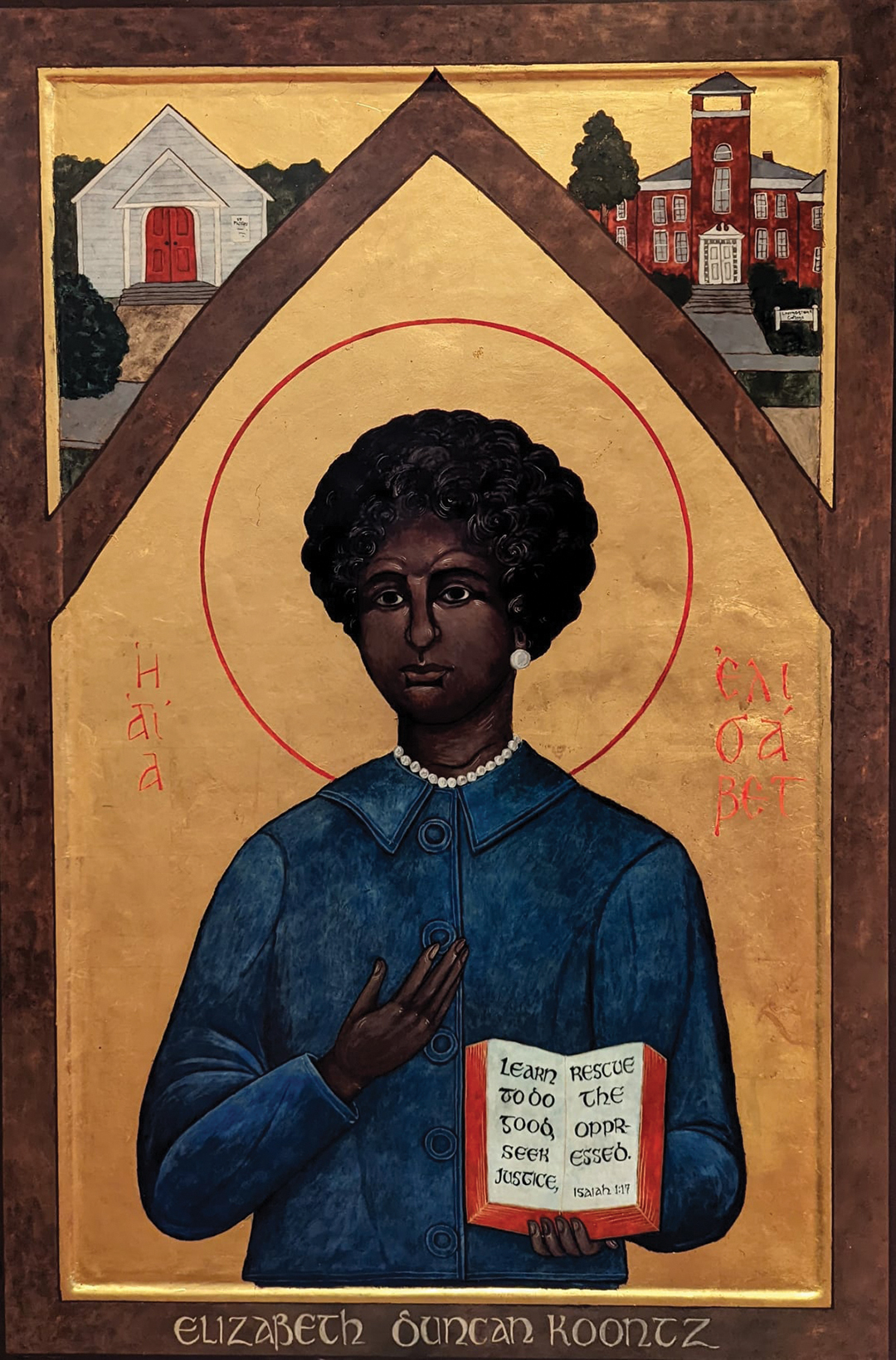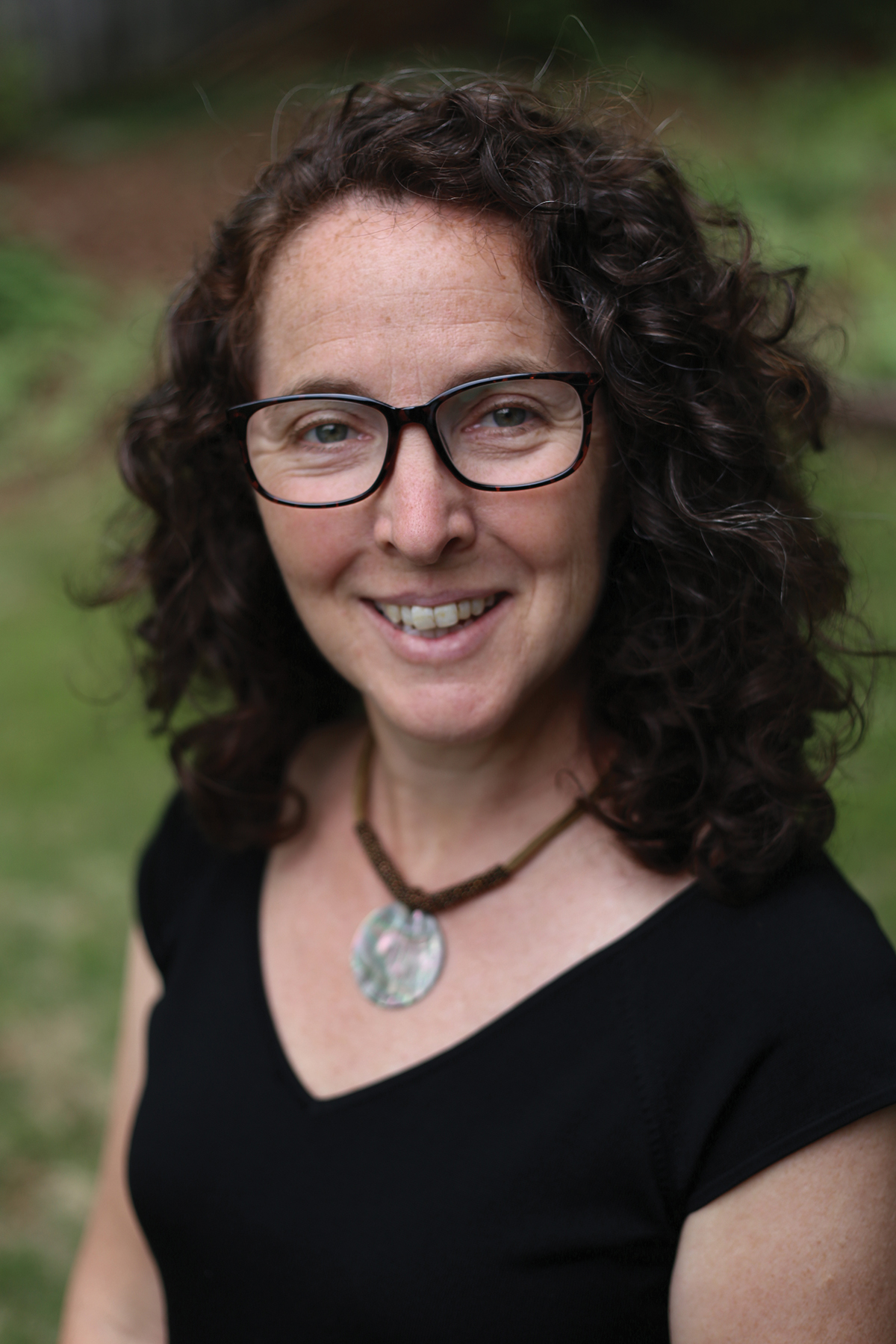Disciple: The Icon Project

St. Luke’s takes the next step in exploring their racial history
By Christine McTaggart
In 2018, St. Luke’s, Salisbury, embarked on a journey to learn more about their church’s racial history (Disciple, Winter 2020). It was a journey that actually began months earlier, when, in an effort to learn more about how they might serve their neighbors and clarify their sense of mission, they found what felt like a call to prison ministry. The congregation had been studying racism within the criminal justice system, and, with the church’s location within a square bordered by the county jail on one side, the county courthouse on another and lawyers’ offices all around, it seemed a natural fit. Efforts to reach out and establish relationships fell victim to resistance and red tape, however, “[s]o with the front door closed,” said the Rev. Robert Black, rector of St. Luke’s, “we started searching for what other doors might be there.”
The congregation continued their study of the criminal justice system, reading the work of people like Michelle Alexander, author of The New Jim Crow. The more they learned, the more they began to wonder about the history of racism in their own church and the surrounding Salisbury community.
So began the Becoming Beloved Community Project. Funded largely by a Mission Endowment Grant awarded in January 2019, the project proposed three goals: to employ a historian to assist with researching St. Luke’s history; to examine racism from a systemic perspective to help understand how the microcosm of the local Salisbury community fit into the bigger picture; and to give voice to those who lived during the Jim Crow era and experienced racism first hand.
Over the course of the next year, all three goals were achieved. The historian discovered that, while St. Luke’s was not built by enslaved people, the bricks that comprise it were made by them, and the money that funded the construction was money made by enslaved labor. Conversations around what was being discovered quickly spread beyond St. Luke’s to include other members of the community. Interviews with those who lived during the time of Jim Crow were conducted and filmed.
In October 2019, “Becoming Beloved Community,” the documentary film encapsulating the work and featuring the stories collected, debuted to a standing room crowd who stayed for the post-screening panel discussion with participants. November 2019 featured a weekend of presentations and conversations with Methodist Bishop Will Willimon and Dr. Catherine Meeks of the Absalom Jones Center for Racial Justice. The grant-funded project culminated in January 2020, when the historian’s findings were presented.
The response to all of the work was overwhelmingly positive. Community leaders who took part in the weekend with Willimon and Meeks began to meet every month to talk about local issues of race and poverty. Black has helped several other churches begin their own historical exploration by sharing the experience and process St. Luke’s followed. Training with the Racial Equity Institute has been organized and completed by community leaders.
And St. Luke’s began to discern what came next.
THE NEW PHASE BEGINS
 Shortly after the notable events in late 2019 and early 2020, the pandemic set in and disrupted life as we knew it. But it didn’t disrupt the desire on the part of St. Luke’s to continue their reckoning of the church’s racial history, and the next steps revealed themselves during a conversation between Black, a local pastor and the head of the local NAACP in June 2020. The conversation took place after the murder of George Floyd but before the removal of the Confederate statue in Salisbury. As they discussed the statue, race within the community and the importance of representation, Black had a realization.
Shortly after the notable events in late 2019 and early 2020, the pandemic set in and disrupted life as we knew it. But it didn’t disrupt the desire on the part of St. Luke’s to continue their reckoning of the church’s racial history, and the next steps revealed themselves during a conversation between Black, a local pastor and the head of the local NAACP in June 2020. The conversation took place after the murder of George Floyd but before the removal of the Confederate statue in Salisbury. As they discussed the statue, race within the community and the importance of representation, Black had a realization.
“It dawned on me in the process of this conversation that if either of those two guys walked into St. Luke’s, they would look around and say, ‘Oh, this is a white people’s church,’” said Black. “Looking at the iconography in our stained glass windows, it [made] me uncomfortable that they, or anyone, would walk in our church and have that thought.
“If we’re going to be serious about beloved community,” he continued, “we need to do something about that.”
Removing or altering the existing stained glass windows was not considered. The expense of doing so was a factor, and, though the windows reflect a very Anglo history, they do not contain people or images considered objectionable and in need of removal. Instead, it was decided that new imagery would be added to what already was in place.
Black set about creating an online course to provide an education on the windows of St. Luke’s. Including information about their design, their creation and the donors responsible for them, the research he did revealed an interesting mix of people and theories about how saints such as William of York and St. Hilda came to be reflected in the windows of a church in Salisbury, North Carolina. Over the course of the 12-week Zoom offering, a thorough understanding of the church’s imagery was created, as was a desire to start filling in the gaps of what wasn’t found there.
Black followed the course with the creation of a slide with two columns: one that contained those depicted accurately in the church’s imagery and one that contained those who were either inaccurately portrayed or missing altogether. The first column had a handful of names; the second contained 35. It had already been decided that rather than alter existing images, the church wanted to add to what folks saw when they walked through the doors. After a great deal of conversation, it was decided that St. Luke’s would commission a series of icons that would introduce key figures, accurately depicted, in the history of the church.
Black has a theory about why the church windows hold the images they do. They depict a period in history when the Roman Catholic Church was growing in Salisbury, and Black speculates that the Anglican figures chosen were actually an argument by Episcopal leadership that The Episcopal Church was every bit as legitimate as the Roman Catholic Church.
If the windows depict an Anglican history through the ages, the icons were to honor those whose contributions played a part in Episcopal history as well as to correct or expand existing depictions.
THE ICONS
 The icons total seven in all. The continuation of the Anglican history is reflected with the image of Manteo, thought to be the first person on this continent baptized into the Church of England. The notable contributions of women reflected in St. Luke’s windows were increased with the icon of Elizabeth Duncan Koontz, an educator, civil rights champion and humanitarian who became a member of St. Luke’s when St. Philip’s, the Black Episcopal church in Salisbury, closed in 1970. The Rt. Rev. Henry Beard Delaney, whose contributions are legion and well known in the Diocese of North Carolina, was actually elected bishop at St. Luke’s. William Wilberforce was an 18th-century civil rights activist who introduced legislation to abolish slavery every year for 30 years before it was enacted. His legacy is one of faith and perseverance, and his work is an example of how people of privilege can use their advantages for justice. Finally, St. Luke, the patron saint of the Salisbury congregation, is depicted more accurately and faithfully based on the time and place in which he lived.
The icons total seven in all. The continuation of the Anglican history is reflected with the image of Manteo, thought to be the first person on this continent baptized into the Church of England. The notable contributions of women reflected in St. Luke’s windows were increased with the icon of Elizabeth Duncan Koontz, an educator, civil rights champion and humanitarian who became a member of St. Luke’s when St. Philip’s, the Black Episcopal church in Salisbury, closed in 1970. The Rt. Rev. Henry Beard Delaney, whose contributions are legion and well known in the Diocese of North Carolina, was actually elected bishop at St. Luke’s. William Wilberforce was an 18th-century civil rights activist who introduced legislation to abolish slavery every year for 30 years before it was enacted. His legacy is one of faith and perseverance, and his work is an example of how people of privilege can use their advantages for justice. Finally, St. Luke, the patron saint of the Salisbury congregation, is depicted more accurately and faithfully based on the time and place in which he lived.
The final two icons are, fittingly, the largest of the seven. Depicting the Transfiguration and the Feast of Pentecost, they bring us back to our theology. Knowing they would be placed alongside windows focused on Jesus, the two events were chosen because they complemented the Ascension and Nativity stories in the windows and because of the multitude of things each represents. The Transfiguration not only connects with the resurrection depicted in the window beside it; with its connection to Moses and Elijah in the Old Testament, having them “[appear] with Jesus is a way of lifting up the Old Testament part of our faith as well,” said Black. The Feast of Pentecost shares the theme of the gift of the Holy Spirit with the Nativity window and reminds us that God is the creator.
The icons were written by three artists: Kelly Latimore, Dorothy Perez and Suzanne Schleck. Latimore is one of the most sought after and well-respected artists working in iconography worldwide. His icon, “Refugees: La Sagrada Familia,” in which the flight to Egypt is interpreted as Latinx immigrants crossing the desert, adorns the cover of Pope Francis’s book, A Stranger and You Welcomed Me. Articles covering his work have been featured in national magazines including Sojourners and Christian Century and in The New York Times. Black met him through a seminary classmate after Latimore’s icon of the Madonna and child with Jesus depicted as George Floyd ended up at the church where Black’s friend is the rector.
Latimore was commissioned to write the Transfiguration and the Feast of Pentecost. For the others, the committee overseeing the project wanted to include additional talents. Black had been impressed with an accurately depicted icon of St. Mark shared on Facebook, and, after a well-placed inquiry or two, came to meet the writer, Perez. In addition to the icon of St. Luke, Perez has been commissioned to complete three additional icons for St. Luke’s chapel.
The final four icons of the saints were created by Schleck, whose work was discovered by a simple Google search and who responded when the committee reached out to discuss the project with her.
All three artists were invited to St. Luke’s so they could see the actual space in which their artwork would ultimately go. They were able to take in the sanctuary and the windows with their own eyes rather than depending on photographs or a Zoom tour. It was worth the time and effort, as the result with each and every icon is a new artistic creation that fits seamlessly into the centuries-old building, finally enabling every person who walks through the door to see themselves reflected in the church’s imagery.
NEXT STEPS
The seven icons are now complete and installed in the sanctuary. So what’s next for St. Luke’s as they continue their Becoming Beloved Community journey?
“I would say prayer,” laughed Black. “Prayer and discernment.”
“We will be getting together soon to discuss what comes next,” he said. “We do want to focus on getting back to relationships that were just starting before COVID hit. We don’t know exactly what it will all look like, but something is coming.”
As the next steps take shape, the icons will continue to be introduced to the local community and visitors to St. Luke’s. The words of artist Kelly Latimore, who traveled to Salisbury for the installation of his icons, sum up the hope of what the icons of St. Luke’s will offer: “You see each other in a new way….if you’re looking for Christ in your neighborhood, go walk around your town, and you’ll probably find him.”
Christine McTaggart is the communications director for the Diocese of North Carolina.
Tags: North Carolina Disciple / Racial Reckoning, Justice & Healing
 Canon Missioner for Black Ministries
Canon Missioner for Black Ministries
 Canon Missioner for Diocesan Restitution and Reparations Ministry
Canon Missioner for Diocesan Restitution and Reparations Ministry
 Deacon for Anti-racism and Reconciliation
Deacon for Anti-racism and Reconciliation
 Canon Missioner for Latino/Hispanic Ministry
Canon Missioner for Latino/Hispanic Ministry
 Mission Strategy Coordinator
Mission Strategy Coordinator
